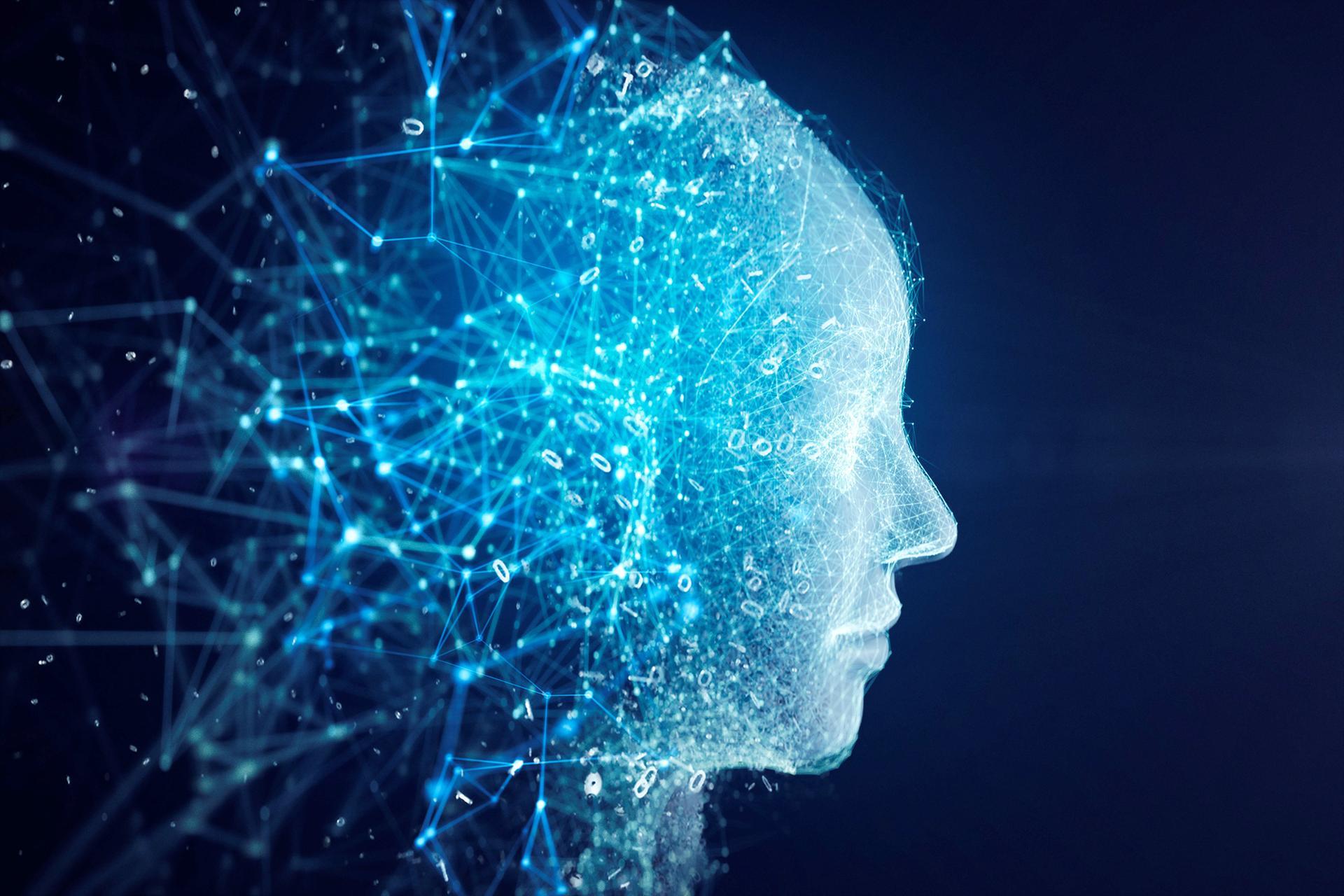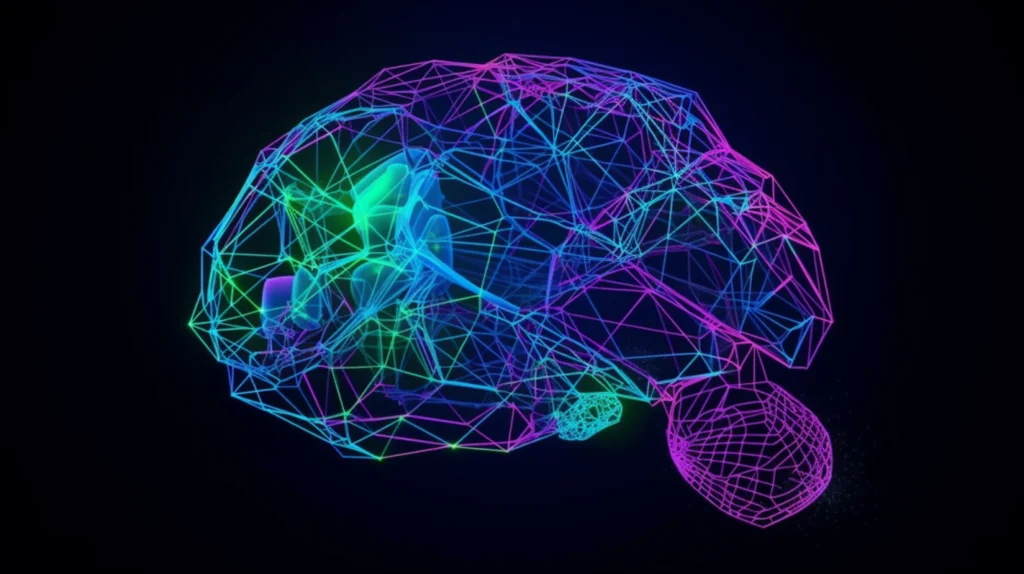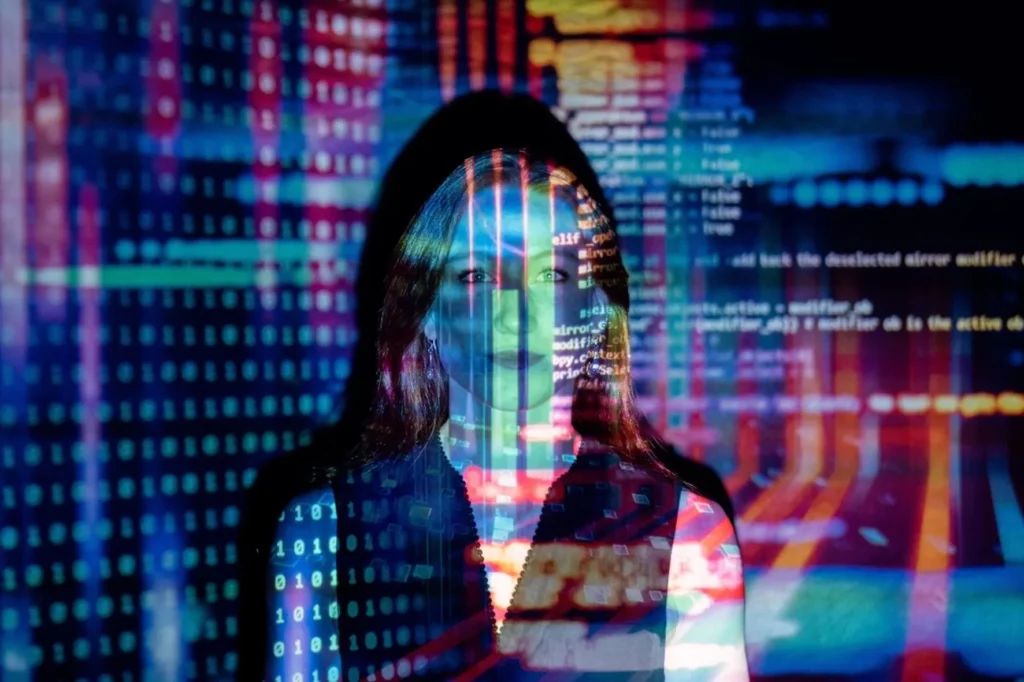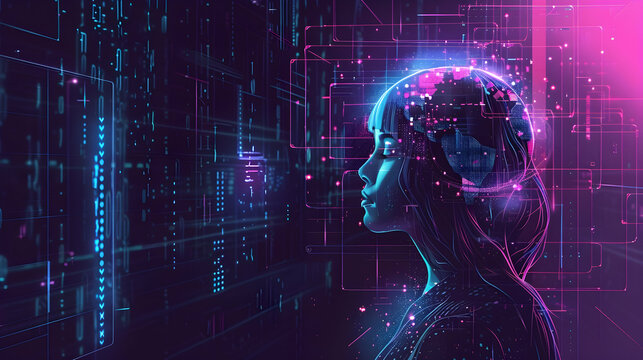Deep learning mimics how humans learn specific things. Deep learning models can classify and recognize patterns in photographs, text, audio, and other data. It also automates human-intensive operations like image description and voice transcription.
Deep learning is crucial to data science, including statistics and predictive modeling. Deep learning helps data scientists acquire, analyze, and interpret vast amounts of data faster and easier.
Human brains have millions of interconnected neurons that learn information, whereas deep learning uses neural networks made of numerous layers of software nodes. Deep learning models are taught with lots of labeled data and neural networks.
Deep learning lets computers learn by example. Imagine a toddler who says dog first to comprehend deep learning. Pointing and saying “dog” teaches toddlers what a dog is and is not.
The parent says, “Yes, that is a dog,” or “No, that is not a dog.” As the child points to objects, he learns the traits all dogs have. The youngster is unknowingly clarifying a complex abstraction: dog. They develop a hierarchy in which each level of abstraction is created with knowledge from the previous layer.

Why is deep learning key?
Deep learning needs lots of labeled data and computer power. Deep learning can be employed in digital assistants, fraud detection, and facial recognition if a company meets both needs. For safety-critical applications like autonomous cars and medical equipment, deep learning has excellent recognition accuracy.
How deep learning works
A youngster learning to identify a dog is similar to deep learning computer programs.
- Deep learning algorithms use layers of interconnected nodes to improve predictions and classifications. Deep learning transforms its input nonlinearly and outputs a statistical model. Iterations continue until output is accurate enough. Deep comes from the number of processing layers data must transit.
- Classical machine learning is supervised, and the programmer must be very explicit when telling the computer what to search for to determine if an image contains a dog. The programmer’s ability to precisely specify a dog feature set determines the computer’s performance in feature extraction, a painstaking operation. Deep learning lets the algorithm build features without supervision.
- The computer program may start with training data, a series of photos tagged dog or non dog using metatags. The application creates a dog feature set and predictive model using training data. In this example, the computer’s first model may identify anything with four legs and a tail a dog. Naturally, the program doesn’t know four legs or tail. It simply searches digital data for pixel patterns. With each iteration, the prediction model grows more complicated and accurate.
Unlike a baby, who takes weeks or months to acquire the notion of dog, a deep learning computer program can pick through millions of photographs and reliably identify those with dogs in a few minutes.
Programmers needed huge data and cloud computing to get enough training data and processing capacity for deep learning programs to be accurate. Deep learning programming may produce accurate predictive models from enormous amounts of unlabeled, unstructured data by immediately creating complicated statistical models from its iterative output.

Deep learning methods
Strong deep learning models can be created using several ways. These methods include learning rate decay, transfer learning, scratch training, and dropout.
Declining learning rate
A hyperparameter, the learning rate defines the system or specifies its functioning before learning. It determines how much the model changes in response to the predicted error when weights are changed. High learning rates might cause unstable training or inefficient weight learning. Small learning rates can lead to a long, stopped training process.
Adjusting the learning rate to improve performance and minimize training time is called learning rate decay, annealing, or adaptive learning rate. Reduce-learning-rate techniques are the easiest and most common training adaptations.
Transfer learning
Perfecting a previously trained model requires an interface to a network’s internals. New data with uncertain classifications is fed to the network first. Once improvements are made to the network, additional jobs can be performed with more specific categorizing abilities. This approach uses less data than others, lowering computation time to minutes or hours.
Training from scratch
This method requires a developer to collect a large, labeled data set and configure a network architecture that can learn the features and model. New applications and those with multiple output categories benefit from this method. However, altogether, it is a less prevalent strategy, as it demands enormous amounts of data, leading training to take days or weeks.
Dropout
This method randomly drops units and their connections from the neural network during training to prevent overfitting in large-parameter networks. Dropout has been shown to increase neural network performance on supervised learning tasks in speech recognition, document classification, and computational biology.

Deep learning neural networks
Most deep learning methods use artificial neural networks (ANNs). As a result, deep learning may often be referred to as deep neural learning or deep neural network (DDN).
DDNs comprise of input, hidden and output layers. A layer of input nodes holds data. Layers and nodes needed per output vary. Outputs with more data need more nodes than yes or no outputs, which only need two. The hidden layers are many levels that process and transfer data to other layers in the neural network.
Different types of neural networks include:
- Recurrent neural networks.
- Convolutional neural networks.
- ANNs feed.
Forward neural networks.
Individual neural networks have advantages for specific applications. They work similarly by entering data into the model and letting it decide if it interpreted or decided correctly.
Due to its trial-and-error training, neural networks require huge data sets. Not surprisingly, neural networks became popular after most companies adopted big data analytics and gathered massive data sets. Because the model’s first few iterations contain educated estimates on image or audio content, the training data must be labeled so the machine can verify its guesses. Thus, unstructured data is less useful. Deep learning models cannot train on unstructured data, but they can analyze it once learned and accurate.

Deep learning helps
Deep learning has these benefits:
- Automatic feature learning. Automatic feature extraction lets deep learning algorithms add additional features without supervision.
- Discovery of patterns. Deep learning systems can scan enormous volumes of data and find complicated patterns in photos, text, and audio, gaining insights it wasn’t trained on.
- Processing volatile data. Deep learning systems can sort huge, varied data sets in transaction and fraud systems.
- Data kinds. Deep learning processes organized and unstructured data.
- Accuracy. Additional node layers improve deep learning model accuracy.
- Can outperform other machine learning algorithms. Deep learning requires less human interaction and can analyze data better than traditional machine learning procedures.
Deep learning examples
Deep learning models can be used for various tasks since they process information like the brain. Most image, NLP, and speech recognition software uses deep learning.
Key NLP applications for enterprises
Deep learning is utilized in all kinds of big data analytics, especially in NLP, language translation, medical diagnosis, stock market trading signals, network security, and image recognition.
Deep learning is utilized in several fields:
- CX customer experience. Already, chatbots employ deep learning. As it matures, deep learning will be used in businesses to improve CX and customer happiness.
- Text creation. Machines are learning a text’s grammar and style and using this model to automatically write a new text with the same spelling, grammar, and style.
- Military and aerospace. Deep learning detects satellite items that indicate troop safety and regions of interest.
- Automation in industry. Industrial automation using deep learning detects when a worker or object is too close to a machine, enhancing worker safety in factories and warehouses.
- Adding color. Deep learning algorithms can colorize black-and-white photographs and movies. This used to be a laborious manual process.
- Visual computing. Deep learning has considerably improved computer vision, enabling precise object detection, image classification, restoration, and segmentation.
Limitations and issues
Deep learning systems have drawbacks:
- Observations teach them simply what was in the data they trained on. Models cannot learn generalizably if a user has a little amount of data if it comes from one source that is not typical of the functional area.
- Biases also plague deep learning models. The predictions of a model trained on biassed data reflect those biases. As models learn to distinguish minor data variances, deep learning programmers have struggled with this. Many of its critical factors are not clearly stated to the programmer. This means a facial recognition model may make assumptions about people’s race or gender without the programmer’s knowledge.
- The learning rate also represents a big barrier to deep learning models. When the rate is too high, the model converges too soon, providing a suboptimal result. If the rate is too low, the process may stall, making a solution harder.
- Hardware requirements for deep learning models limit them. Multicore high-performance GPUs and other processing units are needed for efficiency and time savings. However, these units are costly and energy-intensive. RAM and a hard disk or RAM-based solid-state device are also needed.
The following are other obstacles:
- Needs lots of data. additional sophisticated and accurate models demand additional parameters and data.
- Not multitasking. Once trained, deep learning models are rigid and cannot multitask. Only one problem can be solved efficiently and accurately by them. Even a similar problem requires system retraining.
- Unreasonable. Any reasoning application. Even with enormous volumes of data, deep learning cannot perform programming or scientific method long-term planning or algorithm-like data manipulation.
Machine learning vs. deep learning
- The way deep learning solves issues distinguishes it from machine learning. Machine learning requires domain experts to discover most used attributes. Deep learning incrementally learns features without subject expertise.
- Deep learning algorithms take longer to train than machine learning algorithms, which take seconds to hours. In testing, the opposite is true. Deep learning algorithms run tests faster than machine learning algorithms, which take longer as data grows.
- Deep learning requires expensive, high-end processors and GPUs, but machine learning does not.
- Deep learning, neural networks, AI
- Many data scientists prefer standard machine learning over deep learning because it is easier to analyze solutions. Small-data machine learning methods are also popular.
- Where deep learning is preferred are enormous amounts of data, lack of domain understanding for feature introspection, and complicated issues like speech recognition and NLP.
- Deep learning involves selecting data sets, choosing an algorithm, training it, and evaluating it.
Future deep learning applications
Automatic facial recognition, digital assistants, and fraud detection use deep learning. Emerging technologies use deep learning.
Medical professionals utilize it to detect delirium in severely unwell patients. Deep learning is also being used by cancer researchers to detect cancer cells automatically. Deep learning helps self-driving cars recognize road signs and pedestrians. Social media networks can moderate content using deep learning on photos and audio.
Deep learning mimics how humans learn specific things. Deep learning models can classify and recognize patterns in photographs, text, audio, and other data. It also automates human-intensive operations like image description and voice transcription.
